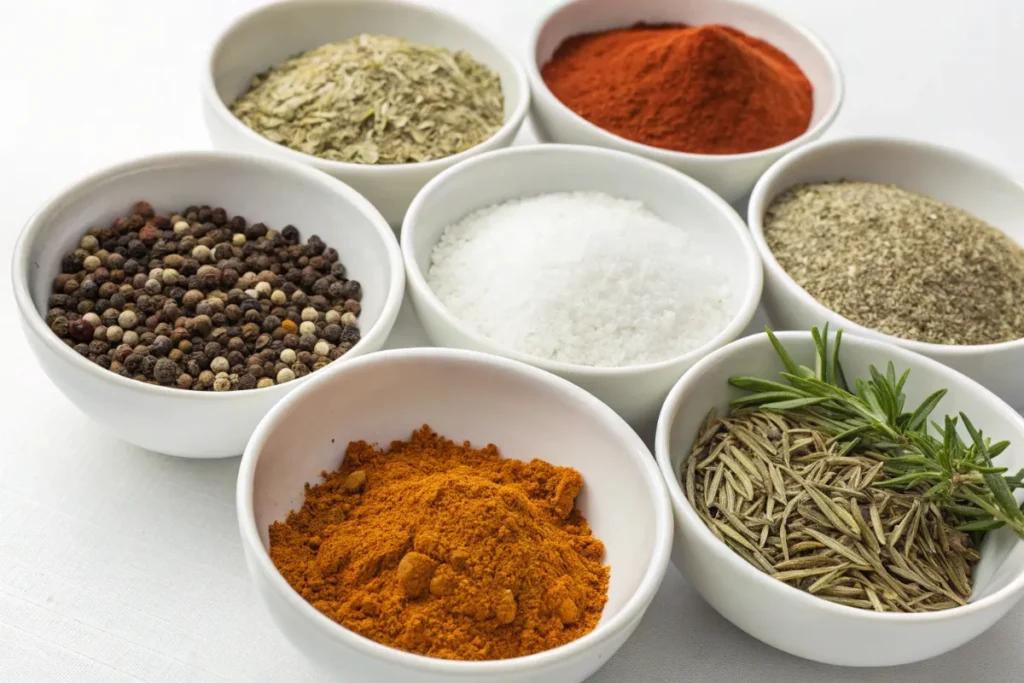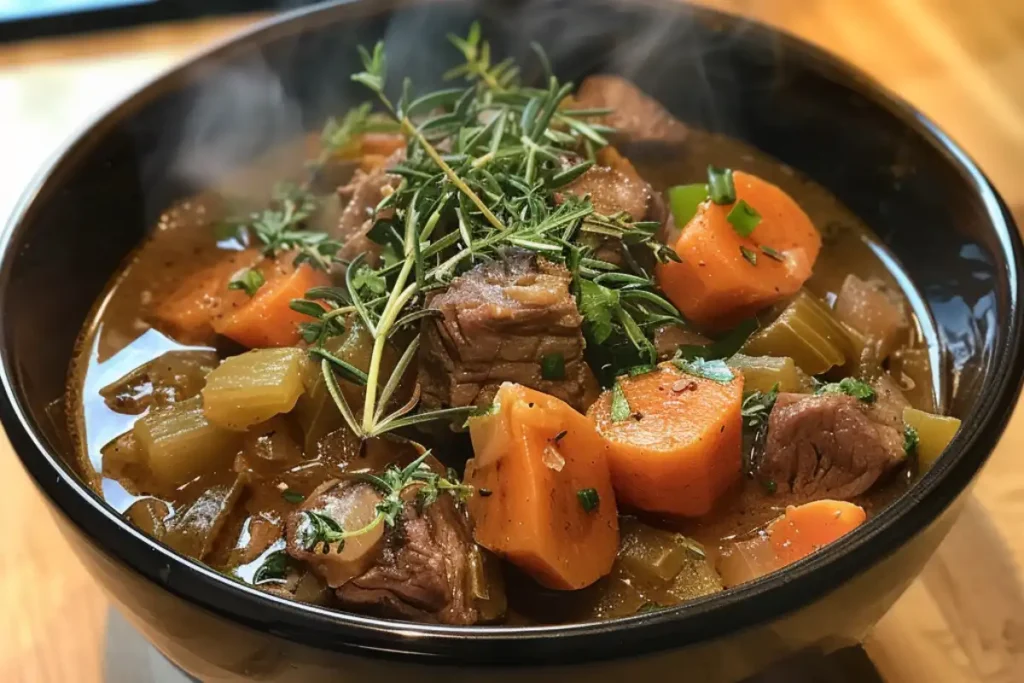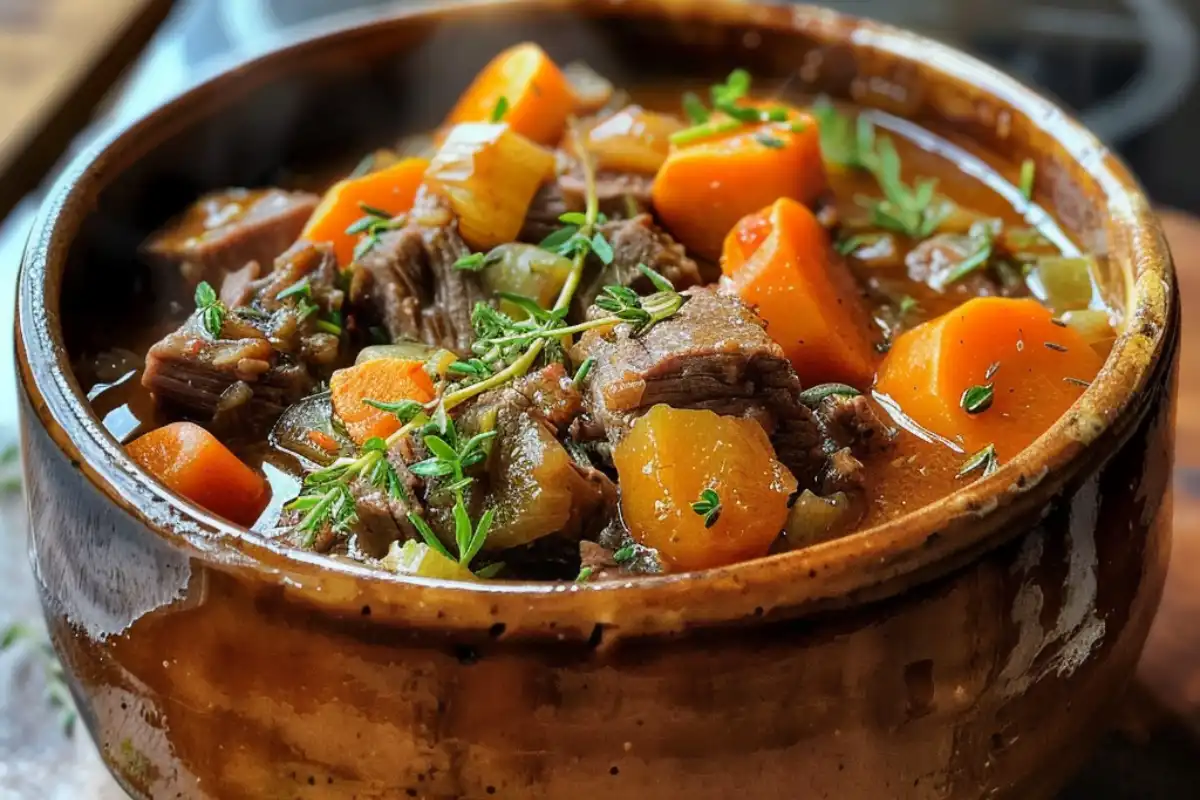Beef stew is the epitome of comfort food, known for its rich, hearty flavors and tender beef. But the secret to a truly delicious beef stew lies in its seasoning. Without the right blend of herbs and spices, even the best cut of meat can fall flat. The right beef stew seasoning can turn a simple stew into a flavorful masterpiece.
In this article, we’ll dive into everything you need to know about creating the perfect seasoning for beef stew. From essential ingredients to customization options and common mistakes, this guide will ensure that your stew is seasoned to perfection.
Table of Contents
Why Is Seasoning Important for Beef Stew?
Seasoning plays an essential role in the overall flavor of beef stew. A stew can be packed with high-quality ingredients like beef, potatoes, and carrots, but without the right seasoning, it may taste bland or lack complexity. The proper combination of spices and herbs ensures that every bite is rich, layered, and satisfying.
The purpose of seasoning is to:
- Enhance the natural flavors of the beef and vegetables.
- Add depth and warmth to the broth, making it more than just a simple liquid.
- Balance savory, spicy, and herbaceous flavors, creating harmony in the dish.
Core Spices and Herbs in Beef Stew Seasoning

To create a delicious, well-balanced beef stew seasoning, there are a few essential spices and herbs that should be part of the blend. Here’s a breakdown of these core ingredients:
1. Salt
- Salt is the cornerstone of any good seasoning blend. It enhances the natural flavors of all the ingredients, making them more pronounced. For beef stew, kosher salt is preferred as it dissolves more evenly and has a more delicate flavor than regular table salt.
2. Black Pepper
- Black pepper adds a mild heat and complexity that balances the richness of the beef and broth. Freshly ground black pepper offers the best flavor, providing both heat and depth to the stew.
3. Garlic Powder
- Garlic powder gives a savory, umami kick that complements the beef and vegetables. While fresh garlic can be used, garlic powder offers a more concentrated and mellow flavor that works well in seasoning blends.
4. Onion Powder
- Like garlic powder, onion powder brings a sweet, earthy flavor to the stew. It’s particularly helpful for adding a subtle onion taste without the texture of chopped onions, which can become overly soft when cooked for long periods.
5. Paprika
- Paprika adds warmth, color, and a mild sweetness to the stew. For those who prefer a smokier flavor, smoked paprika can be substituted, giving the stew a deeper, more complex flavor.
6. Rosemary
- Rosemary is a robust, woody herb that pairs beautifully with beef. It adds a fresh, piney aroma that brightens the rich flavors of the stew.
7. Thyme
- Thyme is another essential herb that complements beef stew. Its subtle minty and earthy notes add a delicate yet crucial flavor that rounds out the seasoning blend.
8. Bay Leaves
- Bay leaves are often added whole to the stew while it simmers. They impart a slightly bitter, herbal flavor to the broth, enhancing the overall complexity of the dish. Just remember to remove the bay leaves before serving.
Customizing Beef Stew Seasoning
Enhance your beef stew seasoning with these optional ingredients:
Celery Salt: Brings a salty, herbal depth without fresh celery.
Cayenne Pepper: Adds a touch of heat—use sparingly.
Sage: Earthy and sweet, perfect for hearty stews.
Marjoram: A milder, floral alternative to oregano.
How to Make Homemade Beef Stew Seasoning
Making your own beef stew seasoning at home is simple and allows you to tailor the flavors to your liking. Here’s a basic recipe that you can adjust based on your preferences:
Ingredients:
- 1 tablespoon kosher salt
- 1 tablespoon black pepper
- 1 tablespoon garlic powder
- 1 tablespoon onion powder
- 1 tablespoon paprika (smoked or regular)
- 2 teaspoons dried rosemary
- 2 teaspoons dried thyme
- 2 bay leaves (to be added to the stew during cooking)
Instructions:
- Measure the ingredients: Use a set of measuring spoons to ensure precise amounts.
- Mix: Combine all the ingredients in a small bowl, making sure they are evenly mixed.
- Store: Place the seasoning mix in an airtight container. Store it in a cool, dry place for up to three months.
You can use about 1-2 tablespoons of this seasoning blend per pound of beef, depending on your taste preference. This recipe can easily be doubled or tripled if you want to make a larger batch for future stews.
For additional seasoning ideas, check out this homemade pot roast seasoning guide.
How to Use Beef Stew Seasoning in Cooking

Properly using your beef stew seasoning is key to achieving the best flavor. Here’s how to layer the seasoning throughout the cooking process for maximum impact:
1. Seasoning the Beef
- Before browning the beef, sprinkle it generously with the seasoning mix. This step helps create a flavorful crust on the meat, locking in moisture and flavor.To explore more on this, check out these best cooking techniques for beef.
2. Layering Flavors During Cooking
- As the stew simmers, add more seasoning to the broth and vegetables. This ensures that the flavors are infused throughout the entire dish, rather than just sitting on the surface.
3. Bay Leaves
- Add bay leaves at the start of the simmering process, allowing them to infuse the broth with their subtle herbal flavor. Be sure to remove the bay leaves before serving, as they are not meant to be eaten.
Common Mistakes to Avoid When Seasoning Beef Stew
While seasoning beef stew is fairly straightforward, there are a few common mistakes that can result in an underwhelming dish. Here are some pitfalls to avoid:
- Over-seasoning: Adding too much seasoning can overpower the natural flavors of the ingredients, especially if you use too much salt or heat. Always start with less and adjust as you go.
- Under-seasoning: On the other hand, a bland stew can be just as disappointing. Taste the stew as it simmers and add more seasoning if needed.
- Not allowing spices to bloom: When browning the beef or sautéing vegetables, allow the spices to bloom by cooking them in oil or fat for a short time. This step releases the full flavor of the spices before the broth is added.
For more inspiration and recipes, don’t forget to check out this delicious German chocolate poke cake for a sweet finish to your hearty meal.
Beef Stew Seasoning Variations
There are countless ways to tweak your beef stew seasoning to suit your personal preferences. Here are a few variations you can try:
1. Spicy Beef Stew Seasoning
- If you like your stew with a bit of heat, add extra black pepper and a pinch of cayenne pepper. This variation is great for those who enjoy a little spice in their comfort food.
2. Herb-Forward Beef Stew Seasoning
- For a stew that’s more herbaceous, increase the amount of rosemary, thyme, and sage. This variation brings a bright, fresh flavor that pairs wonderfully with the richness of the beef.
3. Smoky Beef Stew Seasoning
- To create a stew with a rich, smoky flavor, substitute regular paprika with smoked paprika. You can even add a touch of liquid smoke for an extra layer of depth.
Serving Suggestions and Side Dishes for Beef Stew
A well-seasoned beef stew can stand on its own, but pairing it with the right side dish can elevate the entire meal. Here are a few side dish ideas to serve alongside your stew:
- Crusty Bread: Serve your beef stew with warm, crusty bread for dipping into the rich broth.
- Mashed Potatoes: Creamy mashed potatoes are a classic pairing for beef stew, adding another layer of comfort to the meal.
- Rice or Quinoa: For a lighter option, serve the stew over a bed of rice or quinoa to soak up the broth.
For additional meal ideas that pair well with hearty stews, try this Hawaiian garlic shrimp recipe, which offers a flavorful contrast to the richness of beef stew.
Mastering the art of beef stew seasoning is the key to creating a stew that’s rich, flavorful, and deeply satisfying. Whether you prefer a traditional seasoning blend or want to experiment with smoky or spicy variations, the right mix of herbs and spices can elevate your stew to new heights.
FAQs on Beef Stew Seasoning
1. How much seasoning should I use for beef stew?
- A general rule of thumb is to use about 2 tablespoons of seasoning per pound of beef. However, this can be adjusted based on your taste preferences.
2. Can I make beef stew seasoning in advance?
- Yes, homemade beef stew seasoning can be made in advance and stored in an airtight container for up to three months.
3. What herbs are best for beef stew?
- Rosemary, thyme, and bay leaves are the most commonly used herbs in beef stew. Other herbs like sage and marjoram can also be added for extra flavor.
4. Can I use store-bought seasoning blends for beef stew?
- Absolutely! Store-bought blends are convenient and work well, but making your own seasoning allows you to control the flavors and salt content.
Beef Stew Seasoning
This Beef Stew Seasoning blend creates a rich, hearty, and flavorful stew every time! Made with a perfect mix of savory herbs, spices, and seasonings, this homemade blend enhances beef, vegetables, and broth for a deliciously comforting dish.
- Prep Time: 5 minutes
- Total Time: 5 minutes
- Category: Seasoning & Spices
- Method: No-Cook
Ingredients
For the Beef Stew Seasoning:
- 1 tbsp paprika (smoked or sweet)
- 1 tbsp garlic powder
- 1 tbsp onion powder
- 2 tsp salt
- 2 tsp black pepper
- 1 tsp dried thyme
- 1 tsp dried rosemary
- 1 tsp dried oregano
- 1 tsp ground mustard
- 1 tsp brown sugar (optional, for depth)
- ½ tsp cayenne pepper (optional, for heat)
Instructions
-
Mix the Seasoning:
- In a small bowl or spice jar, combine all spices.
- Stir or shake well to evenly mix.
-
Use for Beef Stew:
- Use 1 to 2 tbsp of seasoning per 2 lbs of beef.
- Coat beef cubes with seasoning before browning.
- Add extra seasoning as needed while stew simmers.
-
Store for Later:
- Transfer to an airtight container and store in a cool, dry place for up to 6 months
Notes
- For a salt-free version, omit salt and add to taste when cooking.
- For a deeper flavor, toast spices in a dry pan for 1-2 minutes before mixing.
- For extra thickening, mix in 1 tbsp cornstarch with the seasoning before adding to beef.


